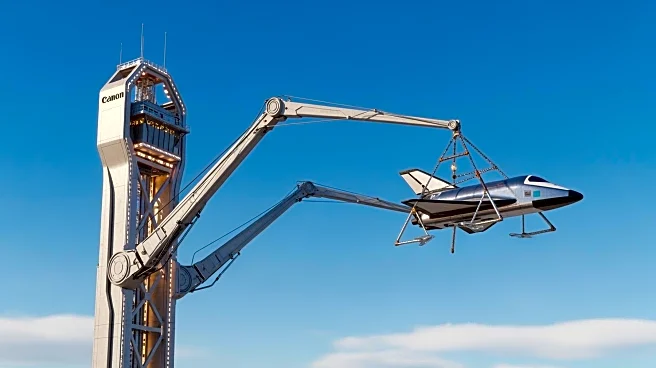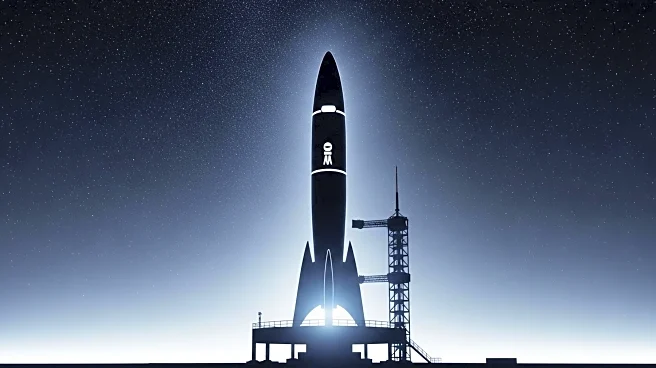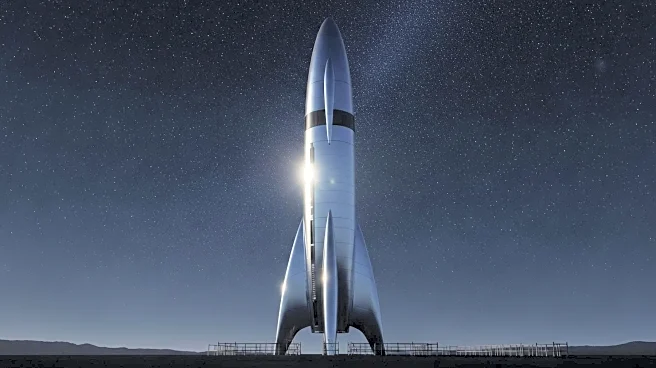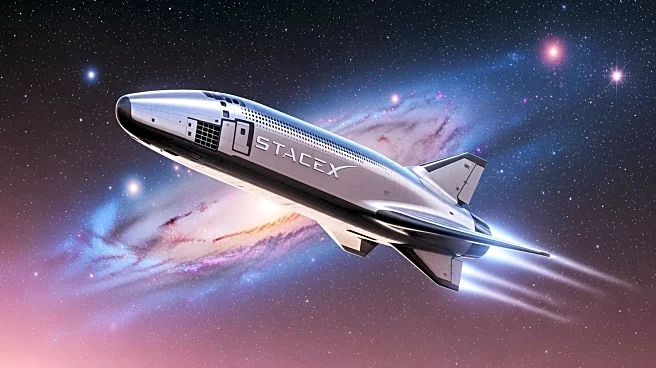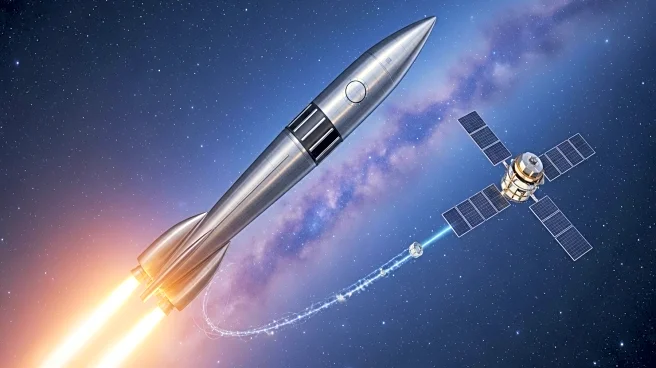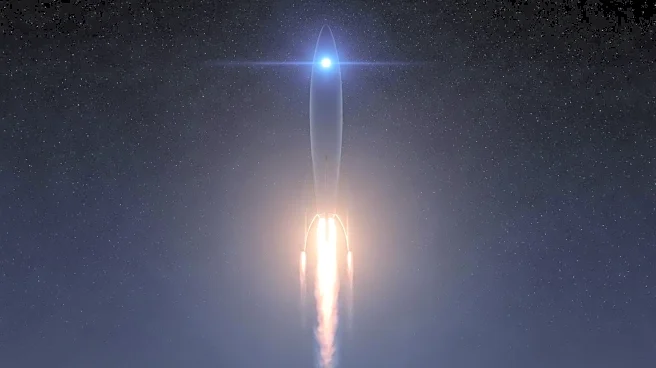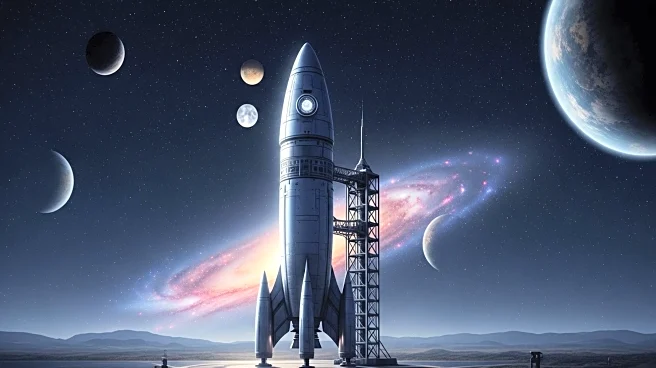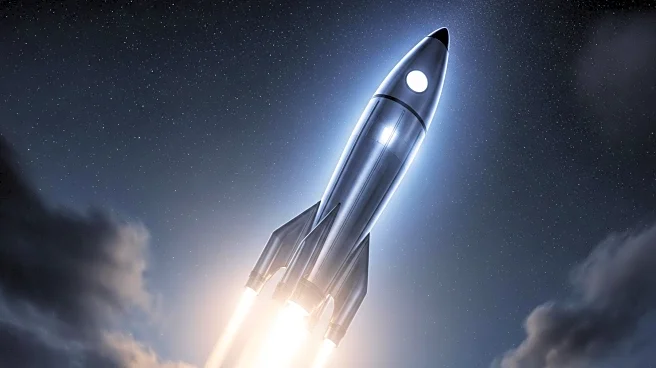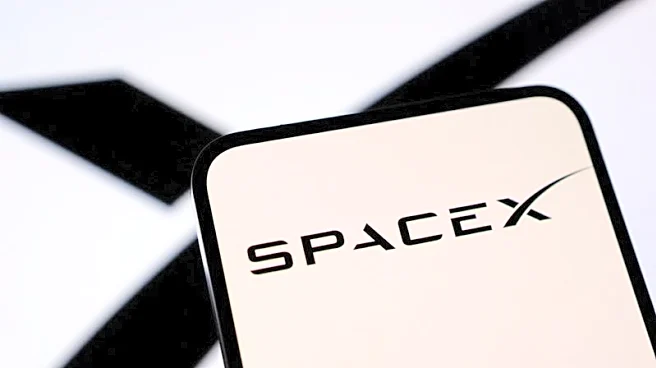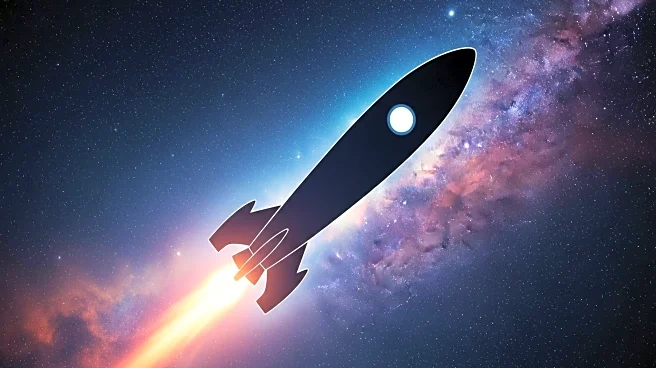What's Happening?
SpaceX, led by Elon Musk, is preparing for a significant milestone in the development of its Starship spacecraft. Following the successful completion of Flight 11, which achieved all major mission objectives,
Musk announced that SpaceX aims to catch the Starship Upper Stage with its launch tower arms, known as 'chopsticks,' by spring 2026. This development is part of SpaceX's strategy to enhance the reusability of Starship, aiming for a launch cadence comparable to conventional aircraft. Flight 11 marked the end of the second-generation Starship and first-generation Super Heavy booster, setting the stage for a redesigned vehicle capable of orbital payload missions and propellant transfer.
Why It's Important?
The planned tower catch is crucial for SpaceX's goal of maximizing Starship's reusability, which could revolutionize space travel by significantly reducing costs and increasing launch frequency. This advancement is expected to bolster SpaceX's position in the space industry, potentially enabling missions to Mars and beyond. The success of this initiative could have wide-reaching implications for space exploration, making it more accessible and sustainable. Stakeholders in the aerospace sector, including competitors and partners, will be closely monitoring SpaceX's progress as it could reshape industry standards and expectations.
What's Next?
SpaceX's next steps involve preparing for the tower catch attempt in spring 2026, which will require precise engineering and testing to ensure safety and reliability. The company will likely continue refining Starship's design to enhance its capabilities for future missions. As SpaceX progresses, reactions from industry leaders, government agencies, and international space organizations are anticipated, potentially influencing collaborative efforts and regulatory frameworks in space exploration.
Beyond the Headlines
The successful implementation of tower catches could lead to ethical and legal discussions regarding space debris management and the environmental impact of increased launch frequencies. Long-term, SpaceX's advancements may drive cultural shifts in how society perceives space travel, potentially inspiring new generations to pursue careers in STEM fields.
